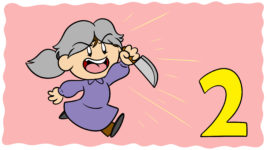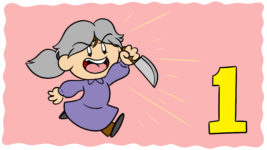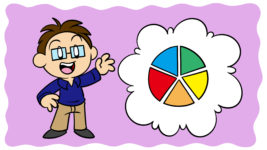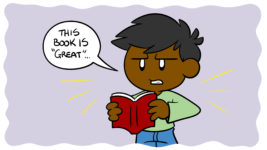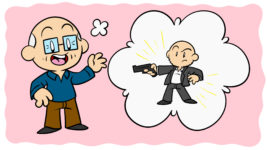You’ve probably heard of an old Greek man called Aristotle, famous for rather a lot of things. One such thing is his book Poetics, the first (or at least earliest surviving) work of literary theory. In this text, Aristotle decreed plot (or ‘mythos’) the most important aspect of drama and drew up his now-famous three-act structure, a way of telling stories that he applied solely to tragedies (though it has since been applied to all kinds of texts).
Aristotle’s tragic structure remained extremely influential all through the Renaissance and nineteenth century, so much so that, in 1863, German novelist and playwright Gustav Freytag took Aristotle’s torch and ran with it in his book Technik des Dramas, developing Aristotle’s original three-act tragic structure into what is now known as Freytag’s Pyramid.
Freytag’s Pyramid is an expanded version of Aristotle’s three-act model and breaks dramatic structure down into five distinct movements that, though written to apply only to classical and Shakespearean texts, can easily be applied to many more modern texts and put to use in your own writing.
So, how exactly is Freytag’s Pyramid applied, and why should you consider using it to shape your own stories? Well, let’s take a look…
Phase one: Exposition
Exposition, also known as the introduction, is the first movement in Freytag’s Pyramid, forming an initial flat line (you can see an illustration of the full pyramid in the red line of this article’s header image). You’ll know this phase from any number of books and films: it’s the section of the text within which the reader is introduced to the main characters, setting, and central conflict and in which the story’s dominant tone/atmosphere is established. You should be able to tell what kind of story you’re in for purely by reading its exposition.
More than this, the exposition typically introduces a book’s main characters in a way that establishes how they communicate with and relate to one another. Moral character and motivations are sometimes hinted at here as well, especially in older texts, but more modern stories may attempt to obscure this information.
Let’s use Muriel Spark’s The Hothouse by the East River as an example. In the novella’s opening chapter, we’re first given a glimpse of what will become a central conflict in the book’s plot (the very first scene takes place at a shoe shop, where protagonist Elsa is having a shoe fitted by the man who might be a German spy who wants Elsa’s husband, Paul, dead). We’re then introduced to Elsa and Paul and are given, through some excellent taut dialogue and third-person limited narration, a sense of how Elsa and Paul relate to one another and how their marriage is going (spoiler alert: not well):
Is it possible that she is smiling again, he thinks; could she be smiling to herself, retaining humorous reflections to herself? Is she sly and sophisticated, not mad after all? But it isn’t possible, he thinks; she is like a child, the way she comes out with everything at this hour of the evening.
– Muriel Spark, The Hothouse by the East River
We’re also introduced to the titular hothouse, an apartment in New York where much of the novella’s drama takes place. On top of that, more peripheral characters are referred to and multiple aspects of the central conflict begin to appear. As far as exposition goes, Spark’s is clean, concise, and effective.
Phase two: Rising action
Unsurprisingly, rising action refers to that part of your plot where things are starting to heat up and is represented by the rising, diagonal line of the pyramid. Typically, a moment of conflict or initial dramatic event – or, to use the technical term, an ‘inciting incident’ – will mark the story’s shift into the rising action phase. This could be, for example, the arrival of a letter (as in Harry Potter and the Sorcerer’s Stone), the revelation of a character’s true (or assumed-to-be-true) identity (as in The Hothouse by the East River), or even an implicit psychological urge built on a character’s history that is never communicated directly (as in West by Carys Davies). Sometimes it’ll be something more obvious, such as the murder that kicks off a murder mystery, and sometimes it’ll be a tiny thing that sets off a chain reaction.
The rising action phase signals the protagonist’s decision to take action in order to overcome the emerging central conflict, and is the section of plot that builds toward the story’s climax. Think of the journey toward Smaug in The Hobbit or Josef K.’s descent into the labyrinthine legal underworld following his unexplained arrest in Kafka’s The Trial.
As you’d expect, the rising action phase tends to take up a lot of narrative space – a lot will happen between your book’s inciting incident and the climax! The trick lies in keeping the pace even; you should build steadily toward the climax, being careful to eke out your events, exposition, and revelations evenly.
Phase three: Climax
The big moment, and the point atop Freytag’s Pyramid! The climax is figuratively and literally the high point of your story. This typically involves the foregrounding, enacting, and resolution (at least partially) of your central conflict, and often depicts a fight or struggle of some kind. In Fitzgerald’s The Great Gatsby, the climax is Gatsby and Tom’s fight in the hotel; in The Hothouse by the East River, the climax is Elsa attending her son Pierre’s play with her husband and friend only to pelt the actors with tomatoes and be dragged out and cast into a dizzying New York full of fracturing and increasingly incredulous characters.
The climax is the turning point of your story; the point after which nothing is the same. This can be for good or ill depending on the overall tone of your story. Those of a more tragic bent will find their protagonists irrevocably sinking toward their doom (like poor K. in The Trial), while more optimistic stories will show their previously struggling protagonist begin to triumph.
Mastering the climax is vital in your own fiction. Remember, climaxes aren’t just fights; they’re moments of profound change. If you find your characters and dynamics are more or less the same after your climax as they were before it, something has gone wrong.
It’s also worth noting that, in opposition to other uses of the term, Freytag’s climax is best understood in respect to the rising action that precedes it; the idea isn’t that the story is over, just that events have built to a head.
Phase four: Falling action
This phase describes the immediate aftermath of your story’s climax, represented by the falling line of the pyramid. Often, stymied by the climactic scene, your protagonist will find themself seemingly far from overcoming the central conflict, or else everything will be thrown into fresh disarray (as in The Great Gatsby, when Daisy drives her and Gatsby home only to hit Myrtle, killing her).
Falling action typically involves a kind of reversal – in classical tragedies, the climax triggers a reversal in the protagonist’s fortunes and they find themselves suffering some kind of downfall. In more modern texts, the protagonist finds themselves reeling from the climax. In this phase, the reader is unsure of how the protagonist will fare; everything is precarious, though the central conflict is approaching its resolution.
In The Hothouse by the East River, the falling action comes when Paul turns up to spy on Elsa drinking at a jazz club with various figures from their shared past, some of them supposedly dead – he plucks her away and the couple flee into a blurry dreamscape of New York bars and clubs, running from one to the next as the ghosts of the past follow them. The pace is fast but waning, the mood surreal, everything unstable, and yet the reader senses the truth of the story will soon be revealed.
The falling action occupies a strange space: tension remains high, but a winding-down is occurring, the central conflict’s resolution coming assuredly but unsteadily into focus. Writing a good falling action can feel a little like walking a tightrope, as you want to maintain reader engagement while slowing the story’s pace.
Phase five: Denouement
Denouement is French for ‘the unknotting,’ which should give you a good idea of what this final phase involves. Everything is untangled; uncertainties are explained, conflicts are resolved, and goals are achieved or pointedly not achieved. Here, the pyramid flattens out again, presenting its second and final horizontal line.
In the classical and Shakespearean texts Freytag was writing about, a comedy was distinct from a tragedy in the way it ended: if the protagonist succeeds, you’ve got a comedy; if they fail, it’s a tragedy. Either way, there’s space left for catharsis, an event that allows for the easing of dramatic tension and anxiety – this is typically the acceptance and ‘settling’ of characters into their new circumstances. For example, in To the Lighthouse by queen of modernism Virginia Woolf, a more modern text, catharsis comes for Mr. Ramsay after he endures a night of intellectual belittlement:
But now, he felt, it didn’t matter a damn who reached Z (if thought ran like an alphabet from A to Z). Somebody would reach it – if not he, then another. This man’s strength and sanity, his feeling for straight forward simple things, these fishermen, the poor old crazed creature in Mucklebackit’s cottage made him feel so vigorous, so relieved of something that he felt roused and triumphant and could not choke back his tears. Raising the book a little to hide his face, he let them fall and shook his head from side to side and forgot himself… forgot his own bothers and failures completely in poor Steenie’s drowning and Mucklebackit’s sorrow (that was Scott at his best) and the astonishing delight and feeling of vigor that it gave him.
– Virginia Woolf, To the Lighthouse
In your own writing, the denouement should wrap everything up nicely, slowing the pace to a gentle drift and soothing, rewarding, or punishing characters as appropriate. After the excitement of the climax and the uncertainty of the falling action, the denouement is here to reassure the reader, calm them, and leave them satisfied.
Look at the denouement in The Hothouse by the East River and see how Spark uses physical description to slow the pace, marking the end of conflict and providing space to breathe:
‘I’ll be glad to get home,’ Elsa says.
– Muriel Spark, The Hothouse by the East River
They stand outside their apartment block, looking at the scaffolding. The upper stories are already gone and the lower part is a shell. A demolition truck waits for the new day’s shift to begin. The morning breeze from the East River is already spreading the dusk.
Elsa stands in the morning light reading the billboard. It announces the new block of apartments to be built on the site of the old.
‘Now we can have some peace,’ says Elsa.
Paul and Elsa do have some peace and, thanks to Spark’s masterful denouement, so does the reader.
Under the pyramids
Writing coaches and blogs often suggest writers focus on the three-act structure when writing and, while that’s a solid foundation, I find that Freytag’s Pyramid is a little more specific and thus a little easier to apply to your own fiction.
After all, ‘beginning,’ ‘middle,’ and ‘end’ are all rather vague. When should things escalate and when should they wind down? What needs to occur for the beginning to become the middle? Freytag answers these questions and, through his handy diagram, helps us understand the elevation and de-escalation of drama and pace across the entire span of a given story.
So, next time you’re planning a book, consider Freytag’s narratological structure as a starting point for your own plotting.
What do you think of Freytag’s Pyramid? Have you used it to help structure your fiction? Let me know in the comments, and check out A Three-Minute Guide To The Snowflake Method By Randy Ingermanson and The Quadrant Method Is The Key To Amazing Storytelling for more innovative ways to approach story structure.
